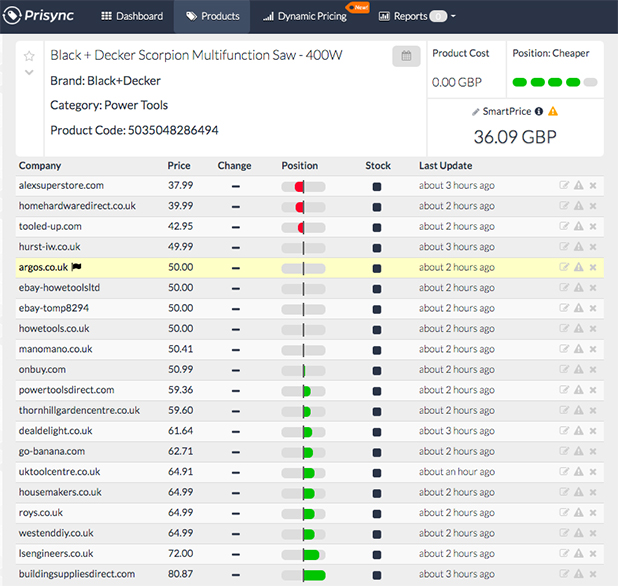

Last updated on
May 11, 2023
Price is the most influential reason when American shoppers decide to buy an item. The second reason is free shipping, followed by sales & discounts.
As you've noticed, all three are price-related. Despite the growing interest in a truly personalized shopping experience and the heightened expectations around excellent customer service, price is still the first priority of shoppers. Knowing this fact, you have to develop a unique pricing strategy for your store, and in this post, we will tell you how to optimize it according to your business objectives.
Your pricing strategy reflects the way you communicate with and relate to your customers. You may be the cheapest shopping destination or the slightly expensive store where they buy designer items or even the store from which they receive discounts for just being loyal.
Price also influences the perceived value. Low prices lure customers into your store, but too low prices often indicate poor product quality, and by extension, poor product value.
For all these reasons, online retailers must control their positioning in the market. Your pricing strategy must be in accordance with your positioning and business objectives.
So, what could be done to optimize the pricing strategy in line with your intentions?
First and foremost, you need to learn where your prices stand against competitors.
Here's a three-step guide:
Search your products on comparison shopping engines (CSEs) like Google Shopping. However, you can obtain much more accurate results with the help of competitor analysis tools like SEMrush.
Define your competition and track their prices. There are three ways to do it:
Manually tracking ten competitors for 15 products takes 6,5 hours. Considering the frequency of price changes in the e-commerce industry, the data you've collected will be irrelevant by the time you finish. Your efforts will go in vain.
The second option is to build an in-house pricing engine. While you can customize it freely according to your needs, it can be a little too costly. These engines resemble living beings since they get old and require maintenance along the road.
You can't customize the engine according to your needs, but it's much more affordable than building and maintaining an in-house engine.

Once you've decided which way to go, it's time to analyze the data you've collected. After observing competitor prices for a while, you will discover patterns in their behavior.
You'll be able to answer the following questions:
Imagine how you could use these insights to gain competitive strength.
For example, you can start by identifying the popular products that retail giants do not compete on. Then, you'll attract many new customers by offering the best deal for those products.
To sum up, tracking competitor prices allows you to respond to their actions immediately. Whereas historical data helps you reveal patterns in their behavior and develop counter-strategies in the long run.
Here's a detailed article by Pixel Productions on the price matching strategy for B2B sales that takes into account all factors that can either make your business profitable or incur losses.
Willingness to pay is a measure of the amount consumers are willing to give up in exchange for your products. Why is this information valuable?
It's most valuable when you're entering a new market.
Most retailers adopt the average price or a competitors' price, or even worse, apply cost-plus pricing when they are entering a new product market.
While adopting the average price seems the safest way to go, you run the risk of getting lost in the competition. Copying a competitor's price won't take long, but because two of you have different costs and target profit margins, their price won't work for you.
Charging prices based on your costs is the worst strategy you can pursue. Shoppers don't consider your costs when they see your price. Instead, they compare it to the previous prices they've encountered to decide if it's fair or not.
Measure willingness to pay. As a first step, identify your buyer personas based on factors like:
Add factors that you think are important to your business.
For the next step, consult your customer analytics, and then survey your buyer personas.
Randomly select sample groups from your audience. Ask them questions like:
As the last step, analyze the results. Based on the questions you ask, you’ll obtain important feedback on your prices, products, common pain points, etc. More importantly, you’ll determine which persona/personas yield the highest profit, which ones need discount incentives and at what rate, and so on.
Even though we can't control consumers' willingness to pay, we can measure it to be used as a reference in pricing our products.
Dynamic pricing is a strategy where product prices are flexible, changing according to demand, supply, competitor prices, and optionally more factors. Amazon benefitted largely from being an early adopter of this strategy. Here's why you can benefit from it too.
Back when there were only two clothing stores in a neighborhood, people had to buy everything from these stores regardless of whether it’s a good deal. Or, they would drive out of town and spend hours to find a good one.
But e-commerce is nothing like those times. Shoppers find the best deal within seconds by searching it on Google or other CSEs. In other words, online prices are transparent.
Naturally, e-commerce stores frequently change prices to attract new customers and keep the existing ones.
What's more, these changes make modern shoppers more and more price-sensitive. They want personalization, excellent customer service, convenience, etc., all at the best price.
For all the three reasons we've listed, dynamic pricing is the top choice for e-commerce businesses. How can you implement it?
First of all, it requires a great amount of data collection and analysis, and the ability to run countless calculations at once. Therefore, it's beyond our capabilities as humans.
Benefit from a dynamic pricing engine, either by building an in-house one or using dynamic pricing software.
There are many points on a demand curve waiting to be tested, which yield different levels of demand. They also have different profit margins.
Online retailers must continuously test different price points to find the best price/demand ratio, which changes frequently.
Surely tracking competitor prices and measuring willingness to pay will narrow down the possibilities. Dynamic pricing engines function similarly. If you don't have the resources to benefit from such an engine, you must still continue testing.
Price is the most important factor for the majority of modern shoppers. And pricing is your greatest weapon if you know how to use it. Develop your unique pricing strategy that best fits your business objectives. While you're on it, implement these optimization tactics which level up your game:
Content marketing guru at Mailmunch. I’m passionate about writing content that resonates with people. Live simply, give generously, stay happy.
Tags:

Hamna Abid
July 11, 2023

Hamna Abid
June 23, 2023

Ammar Mazhar
May 30, 2023